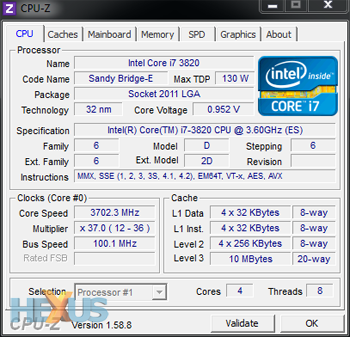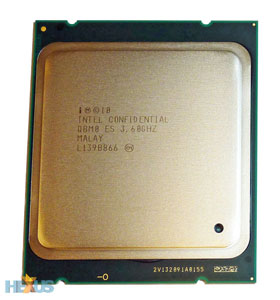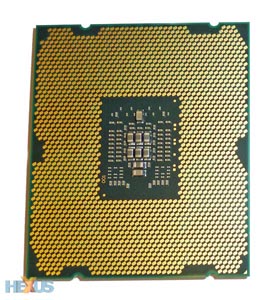Fly in the ointment
A different die
Avid readers may know that the six-core SNB-E parts are actually based on silicon that supports eight cores and 16 threads. Intel chose to disable these for the desktop part but will resurrect them for the server processor that bears the same guts, codenamed Romley and launching soon. It would make little sense for Intel to use this mega-sized die - 435mm² and 2.27bn transistors - for the budget LGA2011 processor
To this end, the Core i7-3820 uses a cut-down version of the architecture, chopping the die-size to 294mm² and transistors to 1.27bn. This a native implementation rather than switching bits off, by the way, and the chopping, if it's accurate to call it that, means there are two distinct dice for SNB-E.
Ignoring a whole bunch of pragmatic issues that temper sweeping statements, this makes the 3820 considerably cheaper to produce and potentially paves the way for more energy-efficient chips. At this moment, however, the TDP is kept to 130W. Our reading of this is one of providing lots of frequency headroom without recourse to chip throttling.
The price, the future, and some limitations
And to the clincher. The 3820 is set to be made available for about £250. Yup, you read that right, a Sandy Bridge-E processor for one-third of the cost of the 3960X. This upper-mainstream price actually puts it in competition with the firm's own Core i7-2700K and 2600K processors. The reason why Intel would do this is one more of timing than familial competition.
The Core i7-2600/2700K won't be the 3820's competition for long, because Intel will bring in the next-generation architecture, dubbed Ivy Bridge, to the mainstream in April 2012. This will mean the high-end and mid-range chips will use vastly different architectures. Nobody outside of Intel yet knows how it will play out, but all we can do is compare what's available today.
X, K, overclocking
So is the Core i7-3820 the steal of the year, priced at 'just' £250 and bringing most of LGA2011/X79's goodness in tow? Well, there may be a fly in the ointment as far as enthusiasts are concerned. Notice the lack of a suffix on this model? No 'K' or 'X'?
X and K chips are fully unlocked, that is, you can push them to sky-high frequencies by simply increasing the multiplier and leaving the base clock at the default 100MHz. The 3820 is partially unlocked. What this means, in a real sense, is the chip can be set to a multiplier which is four bins (400MHz) higher than its maximum per-core Turbo frequency. Simple maths informs us that the 3820 can run at 4.30GHz (3.90GHz + 400MHz), but this relates to single-core load only. Run four cores and the maximum speed is 4.10GHz, etc.
A raw deal for enthusiasts looking to hit 5GHz with this attractively-priced chip? Not quite, as the SNB-E architecture and X79 motherboard support enables the user to force BCLK ratios that boost speed further - remember, there are no CPU-joined graphics to worry about. In short, you can get around the partially-unlocked status with a quick trip to the BIOS, and we'll show you how in the overclocking section.
Summary
The introduction of the cheapest SNB-E chip inevitably comes with certain limitations. Fewer cores, threads and less cache are the obvious cutbacks, though it's no country bumpkin: quad-channel memory support, nice overclocking potential and, for an LGA2011 chip, a hugely attractive street price see to that.
 |
 |
|
Illustrating the point about frequencies and overclocking, the left-hand screengrab shows the chip under load and running all cores. The right-hand picture displays the frequency when the maximum multiplier is inputted.
The big-ass chip's identical in appearance to the 3960X/3930K. Interestingly, Intel is not bundling a reference cooler with any SNB-E processor, forcing you to buy an aftermarket cooler or re-use an existing one.











